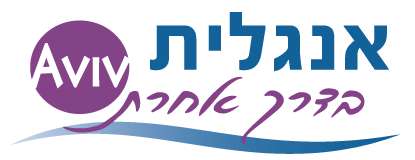As it is usually said, languages are like bridges that help connect
people and cultures. It brings us all a bit closer to each other. But before we
start building the language bridge, we need to make sure we have all the right elements: content, learning resources,
methodology and practice.
But what happens when the construction field does not match our blueprints and, suddenly, we find a massive wall
standing right where the language bridge should be?
This is precisely how students with learning difficulties feel. Those who are blocked from learning a new language due to their learning
differences and not due to lack of intelligence. They feel as if a high wall stands between them and the language blocking their
way to succeed in language acquisition.
So, what about this wall? do we ignore it? bypass it? climb over it? tackle it? learn to live
with it? can we lessen its negative impact on the learning process?
Before anything, we must admit that there is,
in fact, a wall. A wall which is made up of bricks of difficulties that we need
to acknowledge. This process of recognition will show us that we need something
different to assess the situation. We need a different approach, a different
type of learning strategy, a different method.
Let me illustrate this with an example. Once I
was explaining an assignment to a small group of students in a summer school I
was running. They were all staring at me. No one understood what I wanted them
to do. So, I implemented my own strategy. I resorted to a more practical
approach. I went from one student to another and explained, showed and
demonstrated in their own notebooks what I expected them to do. And within 10
minutes all 15 students finished their assignment. No usage of board. No
frontal teaching.
That very day I realized how students with ADD
behave when presented with a new task. They look and stare at you, but your words do not “sink in”. They don’t
hear you, not because they don’t want to, but because they need a different
teaching strategy that would better apply to them. If you move
around and show them individually what you want them to
do, they will do it willingly and easily!
Hence, it became very clear to me that one key
feature of my methodology should be practical and active work. Even explanations should be short, practical and active!
The second key feature that I
incorporated was small steps of explanations and very small steps of
implementation. This is of vital importance. The less abstract, the better. The
smaller the assignments, the better. Very small steps will lead to better and more meaningful understanding thus to long-term memory development.
Small steps also guarantee success which leads
to confidence building which is a vital component in successful learning. We need to instill
confidence. We need the student to become confident. Confidence is built thanks
to success, and this is why we need to guarantee success. How will this be
done? By assigning small steps where we know for sure the student will not
fail.
When talking about language disorders, we need to bring order to the process. It is extremely important to
remember that a student with learning differences has no cognitive deficiency, which is why it is highly recommended to use logic in the process. We need to put
more emphasis on logic than on memory. We need to use the student’s logic to understand first the math of reading. Then, the principles and the behaviour of the language. This is how our
students will overcome their reluctance to the process of learning and, by
intensive practice, will remember what they have learned.
Disorder is tackled by
implementing logic and order. Disorder is solved by order.
Throughout the years I have identified that
one of the crucial problems that students face when learning a new language is
the word order. This constitutes a crucial brick in the impairing wall. Right
next to this brick we can find other two which render the whole structure even
more difficult to tear apart: vocabulary and grammar. These three intertwined
factors must be tackled by us if we want to succeed in the language learning process.
This is when the third key feature of my
methodology is put into practice. The grammatical approach of the language is
taught through patterns of grammar in addition to lots of varied repetitive
practice. By not separating the grammar from the vocabulary, we make the
student produce a whole sentence from the very beginning, achieving the
integration of all the factors of the language in order to make one complete
sentence. Through our exercises the student is encouraged to build,
construct the whole sentence based on the introduced patterns and the new
vocabulary provided within the context of the exercise, as if he was putting
everything together with Lego bricks. All the required information is presented
to the student in a simple, structured way so that he can resort to it and
assemble the words into a coherent string of thought.
Instead of tearing the wall apart or climbing
it we are reconceptualizing every brick that constitutes the wall so that the
student can approach it as a tool rather than as an obstacle. This strategy
fosters independent learning and helps the student grow his or her confidence
and self-esteem regarding the learning process. The methodology is intended to
develop, through employing logics, the student’s intelligence in order for him
to construct sentences.
As we mentioned before, the language learning
process requires that the student acknowledges the obstacles that he or she
might have to face along the way. And it is our duty as language facilitators
to introduce the students with new learning strategies, different from the ones
they know, and to encourage them to address those obstacles in the best
possible way they can. We must show them that a different approach to language
learning is possible and that if they incorporate this new tool into their set
of skills for building the language bride, there is no wall tall enough or
thick enough that could stand in their way of succeeding and mastering a second
language.
כולל בריכה -עד 15:00
מה-3.7.22
- לכל הגילאים
- ארוחת צהרים וספר ראשון
- 4-6 ילדים בממוצע בקבוצה
- 08:30 - 15:00
כולל בריכה -עד 15:00
מה-3.7.22
- לכל הגילאים
- ארוחת צהרים וספר ראשון
- 4-6 ילדים בממוצע בקבוצה
- 08:30 - 15:00
כולל בריכה -עד 15:00
מה-3.7.22
- לכל הגילאים
- ארוחת צהרים וספר ראשון
- 4-6 ילדים בממוצע בקבוצה
- 08:30 - 15:00
כולל בריכה -עד 15:00
מה-3.7.22
- לכל הגילאים
- ארוחת צהרים וספר ראשון
- 4-6 ילדים בממוצע בקבוצה
- 08:30 - 15:00
כולל בריכה -עד 15:00
מה-3.7.22
- לכל הגילאים
- ארוחת צהרים וספר ראשון
- 4-6 ילדים בממוצע בקבוצה
- 08:30 - 15:00

